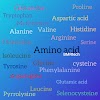Brief history of NCBI Database-
The National Center for Biotechnology Information (NCBI) is located in Bethesda, Maryland and was founded in 1988 through legislation sponsored by Senator Claude Pepper. In addition to maintaining the GenBank nucleic acid sequence database, which receives data through the international collaboration with the DNA Database of Japan (DDBJ) and the European Molecular Biology Laboratory Nucleotide Sequence Database (EMBL-Bank) as well as from the scientific community. The NCBI houses a series of databases relevant to biotechnology and biomedicine and is an important resource for bioinformatics tools and services. NCBI provide data retrieval system and computational resources analysis of GenBank data and other biological data. Recent development and an introduction to the Entrez system, the NCBI suite of resources is grouped into 10 broad categories. NCBI Guide at www.ncbi.nlm.nih.gov and can also be located using the NCBI Web Site database available in Entrez search menus.
NCBI Homepage
Recent Development
Genome Database redesign-
NCBI completely redesigned 2012 the Genome database (www.ncbi.nlm.nih.gov/genome) to broaden its scope and better represent the complexity of modern genome sequencing data. Genome database represented a single chromosome, a record in the redesigned database represents an entire organism (usually a species). Genome sequence data for that organism and other related data such as transcriptome sequences, variation analyses and epigenetic studies.
Genome Database Homepage
Organelle sequences for a species are now part of the corresponding Genome record rather than being separate records. the new database has broadened beyond the NCBI Reference Sequence (RefSeq) collection to include data from all submitters.
Assembly database-
Assembly database (www.ncbi.nlm.nih.gov/assembly/) is a new resource that provides information about the structure of assembled genomes ranging from simple bacterial genome assemblies consisting of a single complete chromosome. Database unambiguously identifies the set of sequences in a particular version of an assembly using an assembly accession version number and tracks changes to genome assemblies that are updated.
Assembly database homepage
Assembly resource displays metadata about genome assemblies such as assembly names, simple statistical reports of the assembly (number of contigs and scaffolds, N50s and total sequence length) and its update history. Assembly database also tracks the relationship between an assembly submitted to the International Nucleotide Sequence Database Consortium and the assembly represented in the NCBI RefSeq project.
Genetic testing registry-
Genetic Testing Registry (GTR) is a new database that collects and displays information about genetic tests that have been voluntarily submitted by the test providers (www.ncbi.nlm.nih.gov/gtr/). GTR provides contextual access to data from NCBI’s resources such as the Gene database, PubMed and Bookshelf in addition to clinical practice guidelines and clinical referral resources.
GTR Homepage
GTR content currently includes biochemical, cytogenetic and molecular tests for Mendelian disorders and drug responses. GTR web site supports access to GeneReviews, maintained by a team led by Roberta A.
Entrez databases-
Entrez is an integrated database retrieval system that provides access to a diverse set of 37 databases that together contain 690 million records. Entrez support text searching using simple Boolean queries, downloading of data in various formats and linking of records between databases based on asserted relationships. Computationally links between ‘neighboring records’, such as those based on computed similarities among sequences or among PubMed abstracts, allow rapid access to groups of related records.










0 Comments